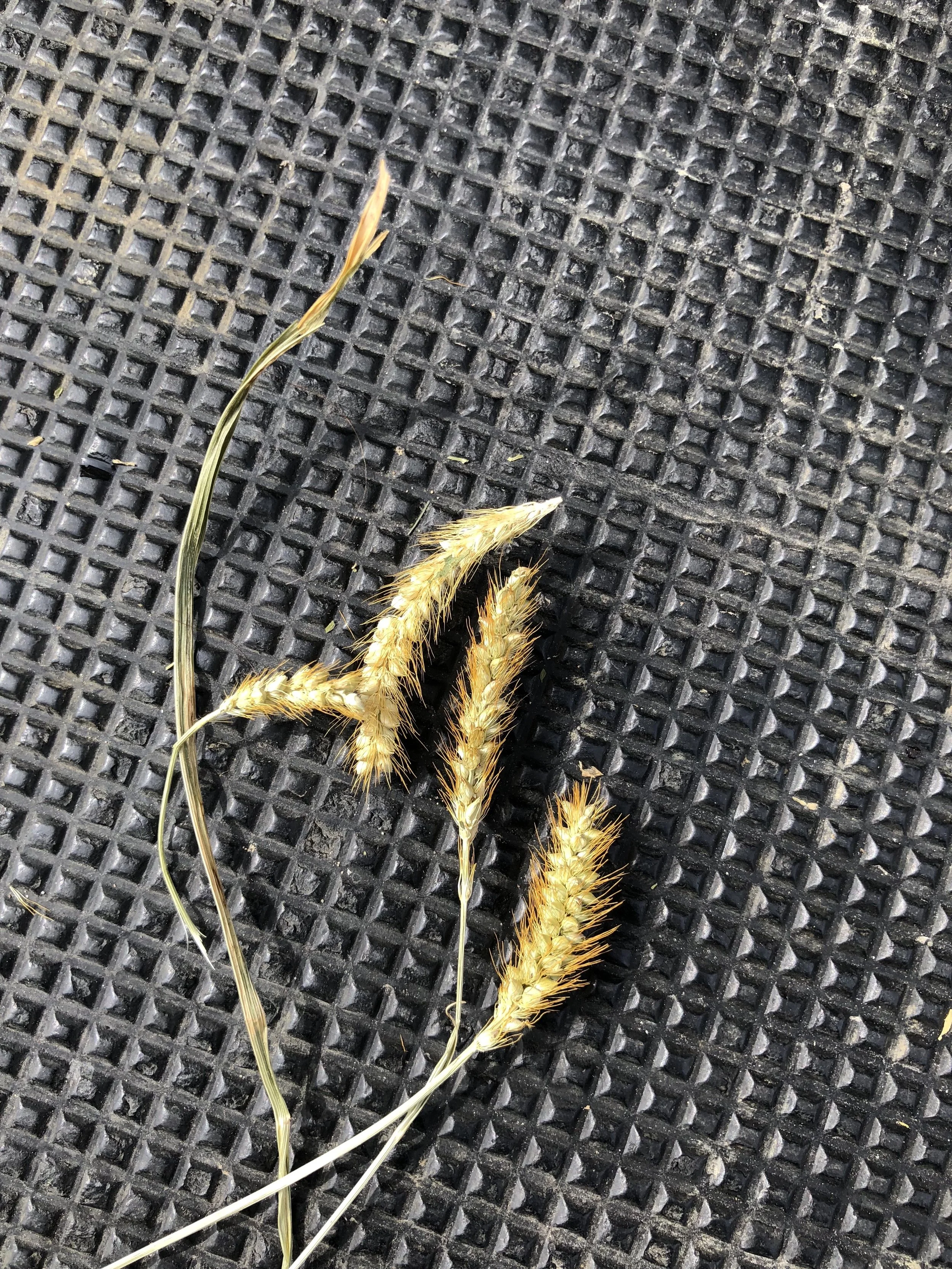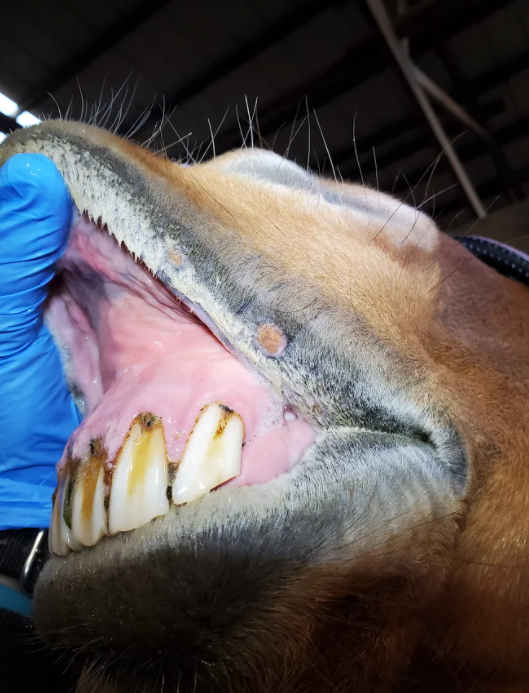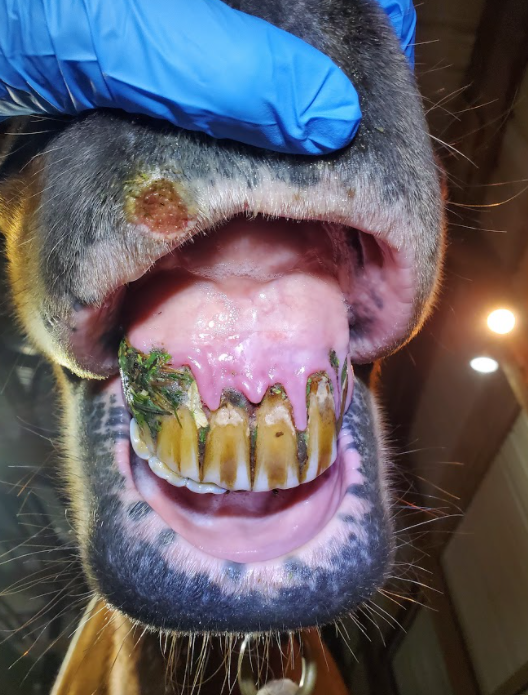Written By: The Irongate Team
Foxtails are seed heads found in some types of mature grasses. The bristles on these seed heads can break off and burrow into a horse's mouth. Acting the same way a plastic anchor does in drywall, the barbed foxtail bristles can't be easily removed.
This horse was seen tossing his head and rubbing his muzzle frequently while eating hay. On a sedated exam, foxtail was found embedded in his lips and gums
This horse’s foxtail ulcers and inflamed gingiva (gums) were found after he began refusing to accept a bit.
Horses that eat hay containing foxtails can develop significant ulceration of the mouth, tongue, or lips. These ulcers may appear relatively benign, but they are often quite painful. Signs of foxtail ulceration include an odor from the mouth, difficulty chewing, excessive salivation, and frothing of the mouth. Affected horses may show a decrease in hay consumption and be resistant to having their mouth handled.
How can you help your horse? If you're feeding mature, late season hay, you may see foxtail in the bale. Watch out for those - your best option is to not feed that hay. While not completely realistic, you can also try to remove any seed heads you can see. If your horse has gone off their hay and you suspect foxtail embedded in their mouth, stop feeding that hay. Most mild cases will resolve on their own if the affected hay is removed - simply let your horse's body handle the rest. In more severe cases, your veterinarian may need to sedate your horse in order to safely and gently remove embedded foxtail barbs. They may also recommend the use of a diluted antiseptic rinse to assist in healing.

























